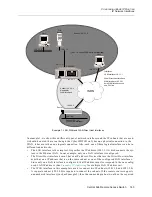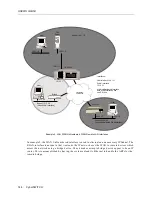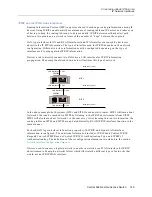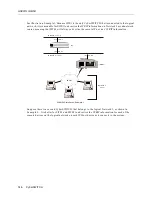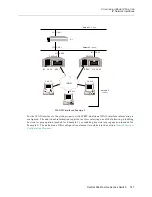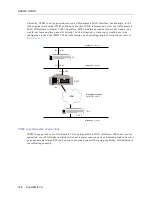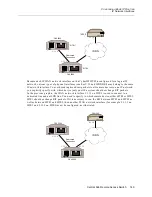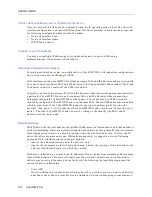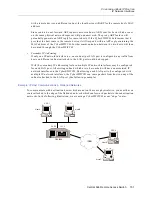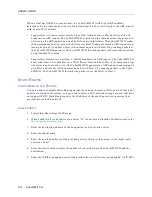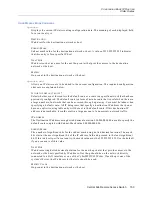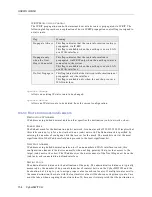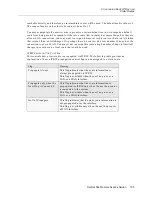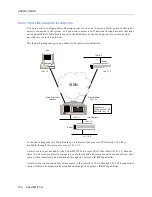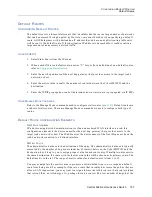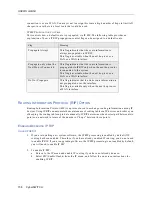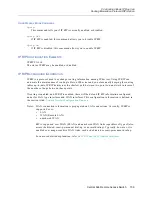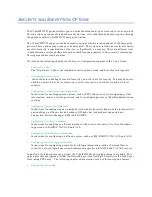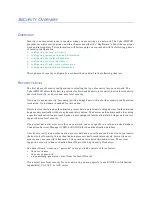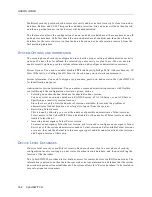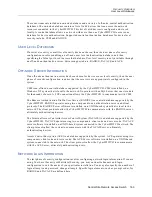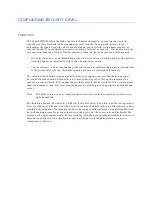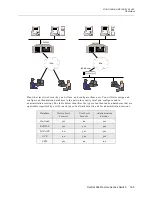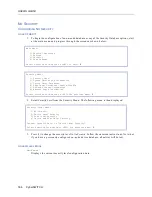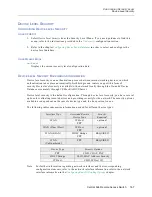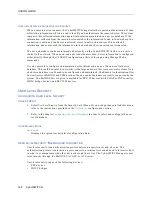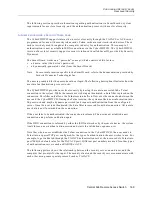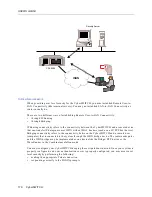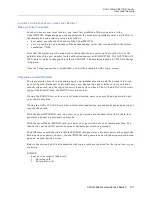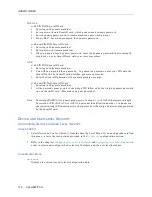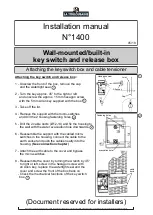
Central Site Remote Access Switch 157
C
ONFIGURING
B
ASIC
IP R
OUTING
Default Routes
D
EFAULT
R
OUTES
C
ONFIGURING
D
EFAULT
R
OUTES
The default route is a form of static route that is useful when there are a large number of networks
that can be accessed through a gateway. However, care must be taken when specifying a default
route. All IP datagrams with a destination IP address that do have an explicit routing table entry
will be sent to the default route. If this destination IP address is unreachable, it could result in a
large amount of unnecessary network traffic.
U
SING
CFGEDIT
1.
Select Static Routes from the IP menu.
2.
When asked if this is a default route, answer “Y” for yes (for a definition of non-default routes,
refer to
Configuring Static Routes
).
3.
Enter the next hop address of the next hop gateway that provides access to the target (sub-)
network or host.
4.
Enter the metric value (usually the number of routers between the CyberSWITCH and the
destination.
5.
Enter the IP RIP propagation control (determines how a static route is propagated via IP RIP).
U
SING
M
ANAGE
M
ODE
C
OMMANDS
Refer to the Manage Mode commands used to configure static routes (
page 153
). Default routes are
a subset of static routes. The same Manage Mode commands are used to configure both type of
routes.
D
EFAULT
R
OUTE
C
ONFIGURATION
E
LEMENTS
N
EXT
H
OP
A
DDRESS
IP address using dotted decimal notation (or if an unnumbered WAN interface is used, this
configuration element is the device name) for the next hop gateway that provides access to the
target (sub-) network or host. The IP address (or the device name) of the Next Hop must be on the
(sub-) network connected to a defined interface.
M
ETRIC
V
ALUE
The administrative distance to the destination of the entry. The administrative distance is typically
measured by the number of hop counts (number of routers) between the CyberSWITCH and the
destination, but it is up to you to assign proper value to each route entry. If multiple routes exist to
the same destination, the route with the least metric value will be chosen as its primary route. The
default metric value is 1. The range of metric values for default routes is from 1 to 15.
You may manipulate the metric value to promote a certain default route, or to impede a default
route from being used. For example, if there is a route that in reality has several hops, but they are
all over LAN connections, you may want to assign a low metric to this route so that a route is taken
that is local, thus, no toll charges. Or, perhaps there is a route with a low number of hops, but the

